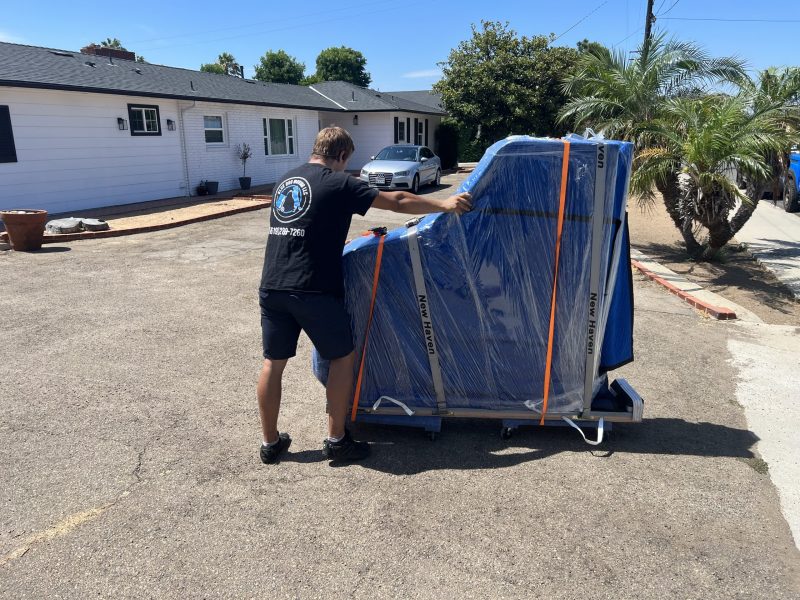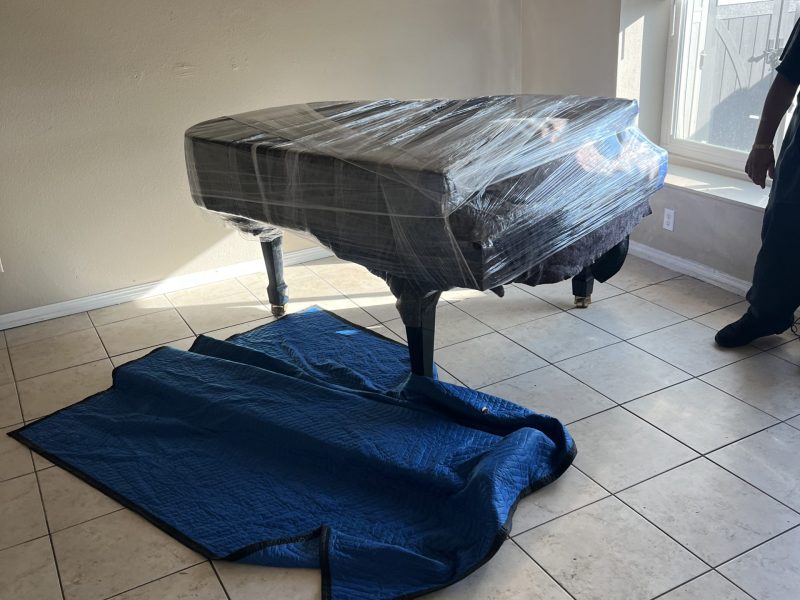Moving a piano from one locale to another, is not a task to be taken lightly. A piano is more than just an intricate component stringed instrument, it is oftentimes a work of art. If you are moving an acoustic piano, you are going to be risking damaging the inside or the outside of the instrument. Pianos are heavy, delicate instruments that require careful planning and preparation to ensure their safety during a move. Not only that, you should be prepared to do whatever it takes, to ensure that you preserve the resonant vibration and tones of your piano during the move to its new location. Whether you are relocating your piano within your home or moving it to a new residence, piano moving safety should be a top priority. In this article, we will discuss essential steps to prepare your piano for a move, ensuring both the instrument and those involved in the move remain safe throughout the process.
Contents
- 1 Assess Your Piano's Condition Before the Move
- 2 Hire Professional Piano Movers for the Job
- 3 Secure the Piano Lid and Legs Before a Move to Prevent Damage
- 4 Remove External Parts on the Piano Well Before the Move Date
- 5 Wrap and Protect the Piano with Clean Quilted Padded Covering Blankets
- 6 Use Piano Dollies and Straps During the Piano Move
- 7 Communicate with Your Movers
- 8 Piano Moving Safety: Conclusion
Assess Your Piano's Condition Before the Move
Before you begin preparing your piano for a move, it will be essential to assess its current condition. Examine the piano for any existing damage, such as scratches, dents, or loose parts. For example, you will want to look at the pedals, which are composed of the soft pedal, muffler pedal and sustain pedal. As you prepare to move the piano, ensure that the pedals are in good working order, and take care to prevent them from being damaged during the piano move. Document any problems, crooked components, or issues with photographs of the parts that may need repair later. Also, it is a good idea to take and review personal notes regarding the accurate overall condition of the piano. This may be important for an insurance claim, if there is damage that does occur to the piano during the move. This assessment will help you identify any new damage that may occur during the move and ensure accountability from the movers later.

Hire Professional Piano Movers for the Job
For the safest piano move, consider hiring professional piano movers. It is not to say that a general mover cannot move a piano, but that is not the issue. You will not want to take a risk that a general mover does not know how to pick up, disassemble, move, and reassemble a piano properly. It will be the better idea to work with a moving company well-versed in moving pianos. This will ensure that you have the best crew with the most experience in handling these delicate instruments on the case. Expert piano movers have the necessary skills, equipment, tools, padding and expertise to safely transport pianos to and from a location. Professional piano movers are highly creative thinkers and problem solvers, when it comes to getting a large piano safely out of a tight space. The specialized piano mover can navigate tight spaces, stairs, and doorways, thus overall reducing the risk of accidents and damage to your precious piano during its move.
Secure the Piano Lid and Legs Before a Move to Prevent Damage
When it is time to move your piano, it will be critical to secure the lid and legs of the instrument to prevent damage to these delicate areas. Begin your preparations by closing and securing the piano lid. If your piano has a locking mechanism for the lid, engage it to prevent the lid from coming open accidentally during the move. If your piano does not have a lock, use strong packing straps or belts to hold the lid securely in place. Never use tape of any kind to secure a lid on a piano, as the adhesive on the tape may permanently damage the finish on the piano. Once you have secured the lid, check twice that the lid cannot accidentally open during the transit of the piano.
Remove External Parts on the Piano Well Before the Move Date
Before the move, remove any external parts that can be detached from the piano, such as music stands, lyres, or pedals. Do not be tempted to pick the piano up by the legs, but rather remove the legs if it is possible to do so safely. Other delicate parts on the piano can include taking special care during the move not to bump the fragile pieces that are the most prone to damage during transit. Place all removed parts from the piano in a securely padded and labeled box, to keep the parts safe from being lost or misplaced during the move. It is a good idea to already take any pieces from the piano to the new location if possible, and place them in a secured area that will allow easy retrieval once the piano arrives at the new location.

Wrap and Protect the Piano with Clean Quilted Padded Covering Blankets
To safeguard your piano’s finish during the move, wrap it in clean moving blankets or quilted padded furniture covers. It is important to ensure that the entire piano is covered, including the legs and sides. Any areas of the piano that you fail to cover can be susceptible to scratches on the outside, but you will not see that until after the move is completed. Use packing tape or straps to secure the blankets in place, and take special care to tape onto the mat and never onto the piano finish itself. This protective layer will cushion the piano against any bumps or minor impacts during the move, and give you peace of mind that the piano is covered against the elements or obstacles during times of movement.
Use Piano Dollies and Straps During the Piano Move
When moving your piano within your home or onto a moving truck, you will want to use piano dollies designed specifically for this purpose. Professional piano movers use specific tools to move a piano, and general movers may be tempted to make do with whatever is left over on the truck. This can be a recipe for disaster when moving a piano from a home. It is better to use a piano dolly, which has sturdy wheels that are engineered and are built to support the weight of the piano, while allowing for easy movement during a move. Additionally, secure the piano to the dolly with heavy-duty straps to prevent it from shifting or falling.
Communicate with Your Movers
If you have hired professional piano movers or enlisted the help of friends or family, ensure clear communication during the move. Professional movers will understand how to manage the specifics of the piano getting in and out of doorways, up and down stairways, and safely in and out of a moving truck. It will be considered a necessity for you to provide instructions on the piano’s weight and dimensions to whoever is going to be moving it. You need to have these specifications on hand well before the moving date. There will no time on the date of the move, to start measuring the piano and determining the measurements for the move. It will also be important to plan out and discuss the route that the piano will be leaving the residence through, as well as going over any anticipated obstacles or narrow stairs that might be involved or in the way on the day of the move. It is safe to say that there needs to be a coordinated team effort, to move your piano safely to is new designated location.
Piano Moving Safety: Conclusion
Moving a piano is a complex and potentially risky task, but with proper piano moving safety precautions, you can ensure the protection of your cherished instrument. Whether you choose professional piano movers or opt for a DIY approach, always prioritize safety by assessing the piano’s condition, securing the lid, removing external parts, and using the right equipment. Whether you are a student, musician, teacher, or anyone who appreciates the beautiful sound of a well-cared for piano, you will appreciate your piano being moved carefully and without sustaining any lasting damage from the move. By following these steps, you will safeguard your piano and ensure a smooth and damage-free move to its new location, wherever that may be for the piano.
How useful was this post?
Click on a star to rate it!
Average rating 0 / 5. Vote count: 0
No votes so far! Be the first to rate this post.

